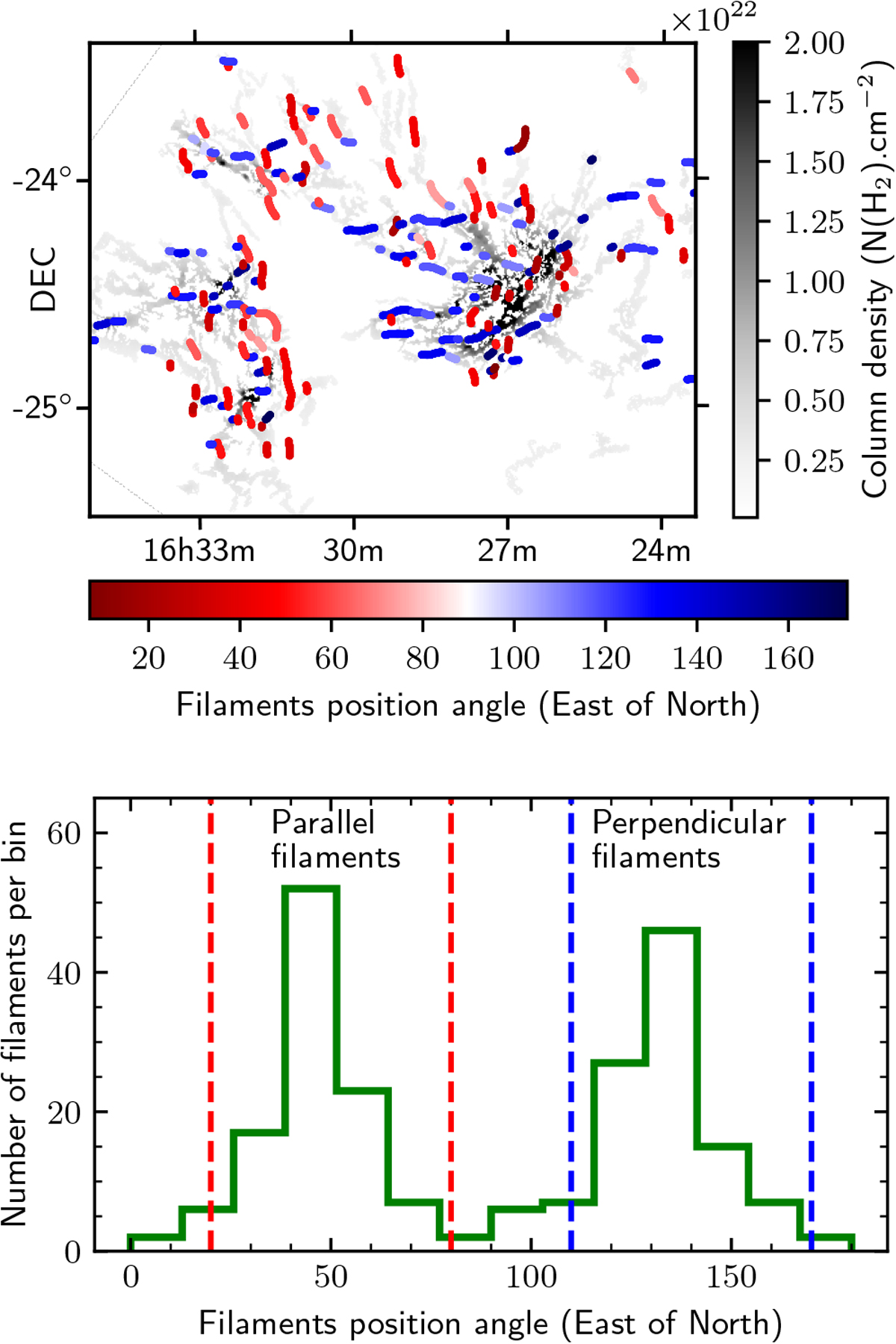Fig. 10

Top: skeleton map of filament orientations (colorscale) overlaid on a filtered version of the Herschel column density map of the Ophiuchus cloud (grayscale) obtained with the getfilaments algorithm (see Fig. 7). The filamentary structures identified with getfilaments are displayed in red or blue depending on their position angles measured east of north (see colorscale). Bottom: distribution of median position angles (PA) for the sample of filaments identified with getfilaments (cf. Sect. 4.3). Two modes of filament orientations are clearly visible. The “parallel” filaments (with PA from 20 to 80 degrees east of north) are following the general direction of the large-scale streamers (cf. Fig. 1) and may be associated with material swept-up by the winds of the Sco OB2 association (whose general direction is about 45 degrees east of north), while the “perpendicular” filaments (with PA from 100 to 160 degrees) may have formed as a result of large-scale compression from the Sco OB2 winds.
Current usage metrics show cumulative count of Article Views (full-text article views including HTML views, PDF and ePub downloads, according to the available data) and Abstracts Views on Vision4Press platform.
Data correspond to usage on the plateform after 2015. The current usage metrics is available 48-96 hours after online publication and is updated daily on week days.
Initial download of the metrics may take a while.


